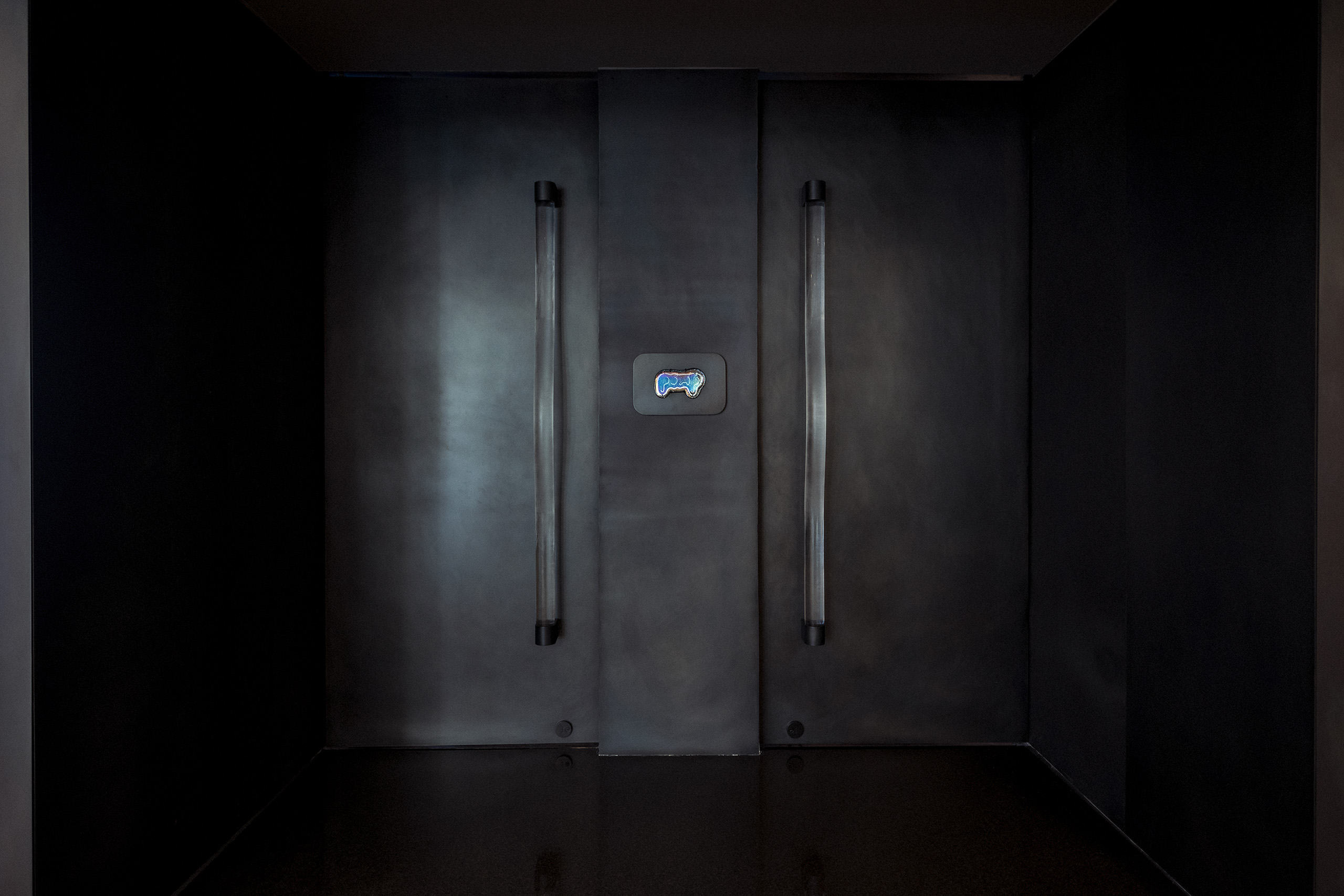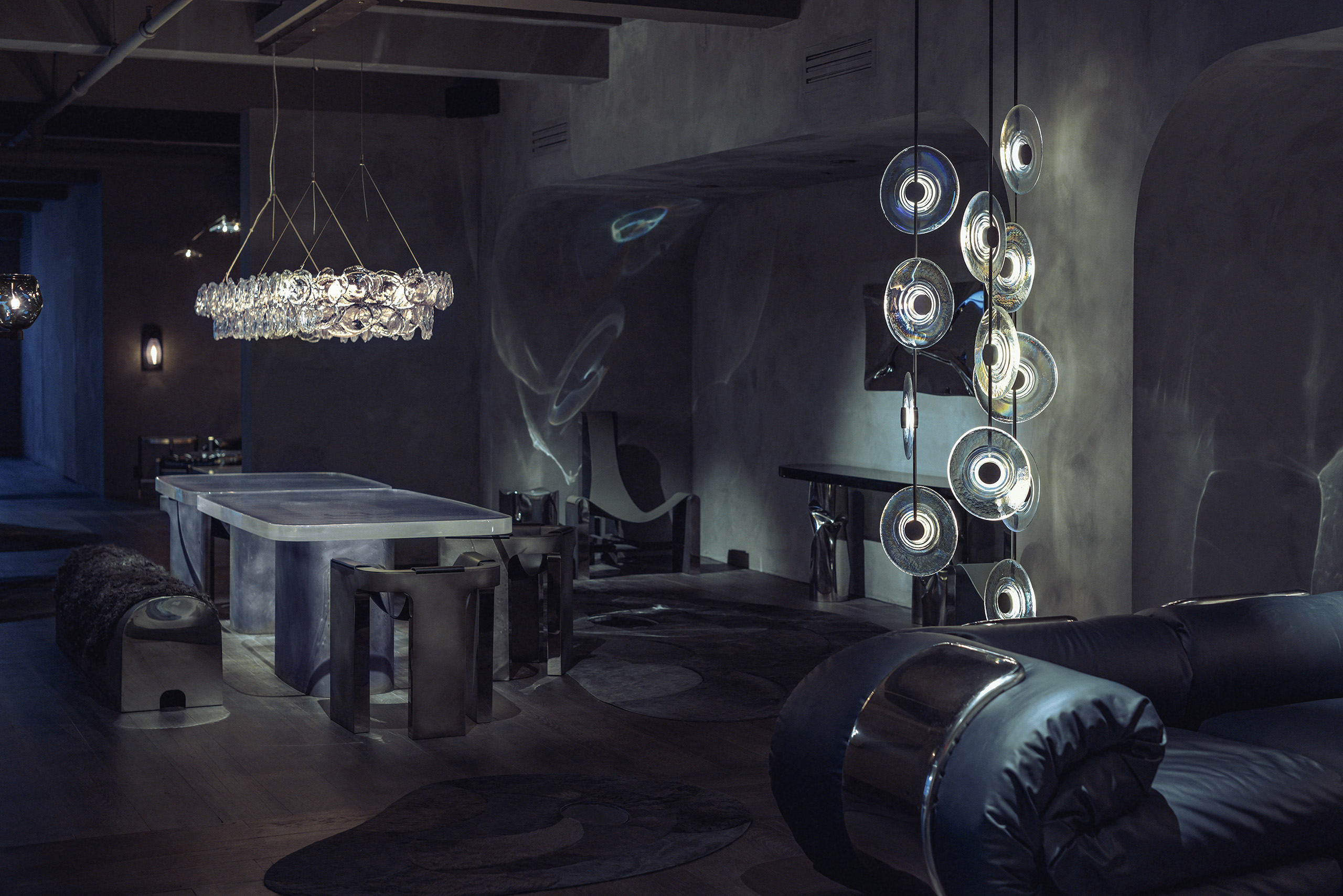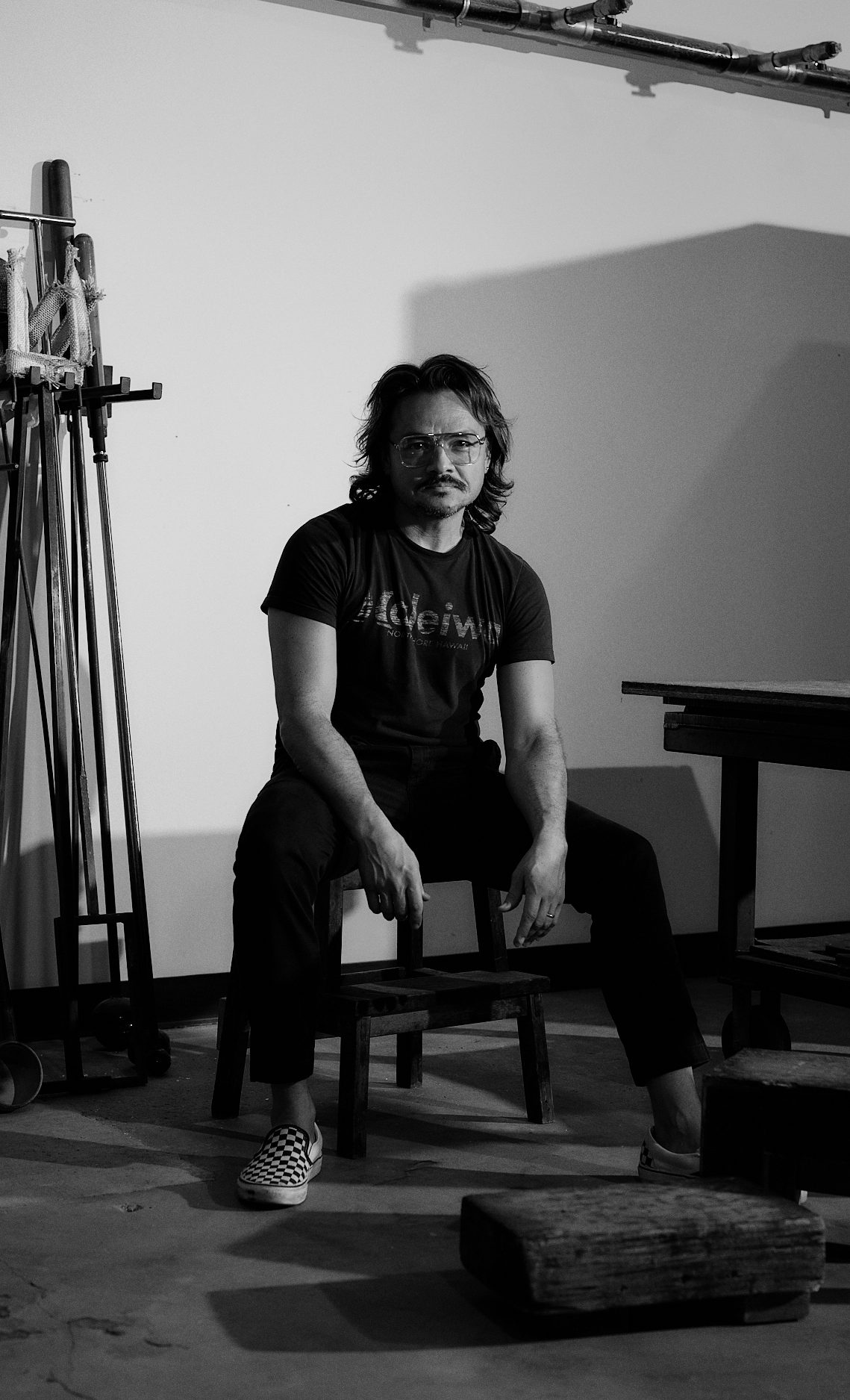Last November, a moody and almost mysterious showroom appeared on the 12th floor of the New York Design Center. Set behind two massive, jet-black, steel doors, the 4,000-square-foot space was designed by Philadelphia-based glass artist John Pomp whose eponymous studio has been producing luxury glass lighting solutions since 1999. To celebrate the brand’s first foray into furnishings, Pomp debuted his largest collection yet in conjunction with the opening of this first-ever standalone showroom.
This week, AN Interior walked the space with Pomp to learn to learn more about the design of the showroom, the new collection, and the significance of both for the growing brand.

Sophie Aliece Hollis: How did you start working in the glassmaking industry?
John Pomp: I started working with glass when I was in art school at Columbus College of Art and Design. I originally had no interest in being a craftsman; my dream was to move to New York to be a painter (I suppose I am a failed painter). But I had a very influential teacher in high school, a multimedia sculptor, Norman Ed, who saved me. I was a terrible student but I had a love for making things, and he helped me turn that into a portfolio submission for an arts scholarship that I ended up getting. When I first got to college, I was still focused on painting and the fine arts. However, when I began to make my class schedule for sophomore year, he suggested I try glass. He actually graduated from a glass program himself and thought that it would make sense for me. And, as luck would have it, I took my first glassmaking class at 19 years old. Really in the first moments that I touched molten glass, I knew I was going to do it forever. I fell in love with the medium and have since devoted my whole life to it. To this day, Norman is still my mentor. He has become one of my best friends, and he married my wife and me.
SAH: When did you start to incorporate lighting with glass?
JP: I originally made glass tabletop vases, but I always felt the glass was nothing without light. So, in my 20s, I transitioned my career from just glass to glass lighting. I had always dreamed of expanding and making everything in glass—glass tables, glass chairs, glass accents. So I think this new showroom and collection is a culmination of my 30+ years of experience and my vision for a glass-centric furniture and lighting brand coming to fruition.

SAH: How big is the new collection?
JP: We’re almost doubling the size of our collection with this release. We’re making sofas, dining chairs, consoles, dining tables, lounge chairs, a coffee table, and, of course, some new lighting. It’s our biggest release to date.
SAH: And with a new showroom to boot. Can you talk a bit about the new space?
JP: This is all new for us, as it’s our first solo showroom. I wanted the space to express the fluidity and molten rawness of the glass I first encountered when I was 19 years old but also reflect my career and its path forward. The overall design thesis was themed as future primitive. By playing with stark material juxtapositions, we created a space that knows no time. Very raw, variegated elements contrast highly futuristic finishes like polished steel. The charcoal plaster walls and dark floors evoke the notion of a patina, while the chrome and curves point to the future. My hope is that no matter where you’re looking, you can’t quite put your finger on what year you’re in.


SAH: Was this idea also inspiration for the new collection?
JP: This whole place is about materiality, as is all our work. As glassmakers and glassblowers, we’re so closely tied to the inherent behavior of a material, and now that we’ve introduced new mediums, we’re focused on how they interact with one another. In our Caldera Table, for example, we designed the form to look as though a puddle of molten glass was poured over a metal box, causing it to give and bend. The designs are a nod to a nuanced gesture of materials coming into play with one another.
SAH: Where do you manufacture your pieces?
JP: We make everything in a 100,000-square-foot warehouse in Philadelphia with a team of about 55 full-time employees. We’re vertically integrated in terms of manufacturing, which is something that I am proud of. A big part of my making career has revolved around taking responsibility and developing production. Honestly, we design the processes more than we design the products.

SAH: I imagine fabricating these monolithic pieces requires quite a lot of work. Do you have a bestseller?
JP: It changes every year. Every time we come up with something new it becomes the top seller. I always tell the design team that I don’t just want to make a bunch of noise, but I want as many hit songs on each album as I can get. I think a big part of that is being able to part with bad work. We throw out designs all the time. Every artist has bad ideas, so recognizing those in our studio has been so important for getting us to where we are today.
